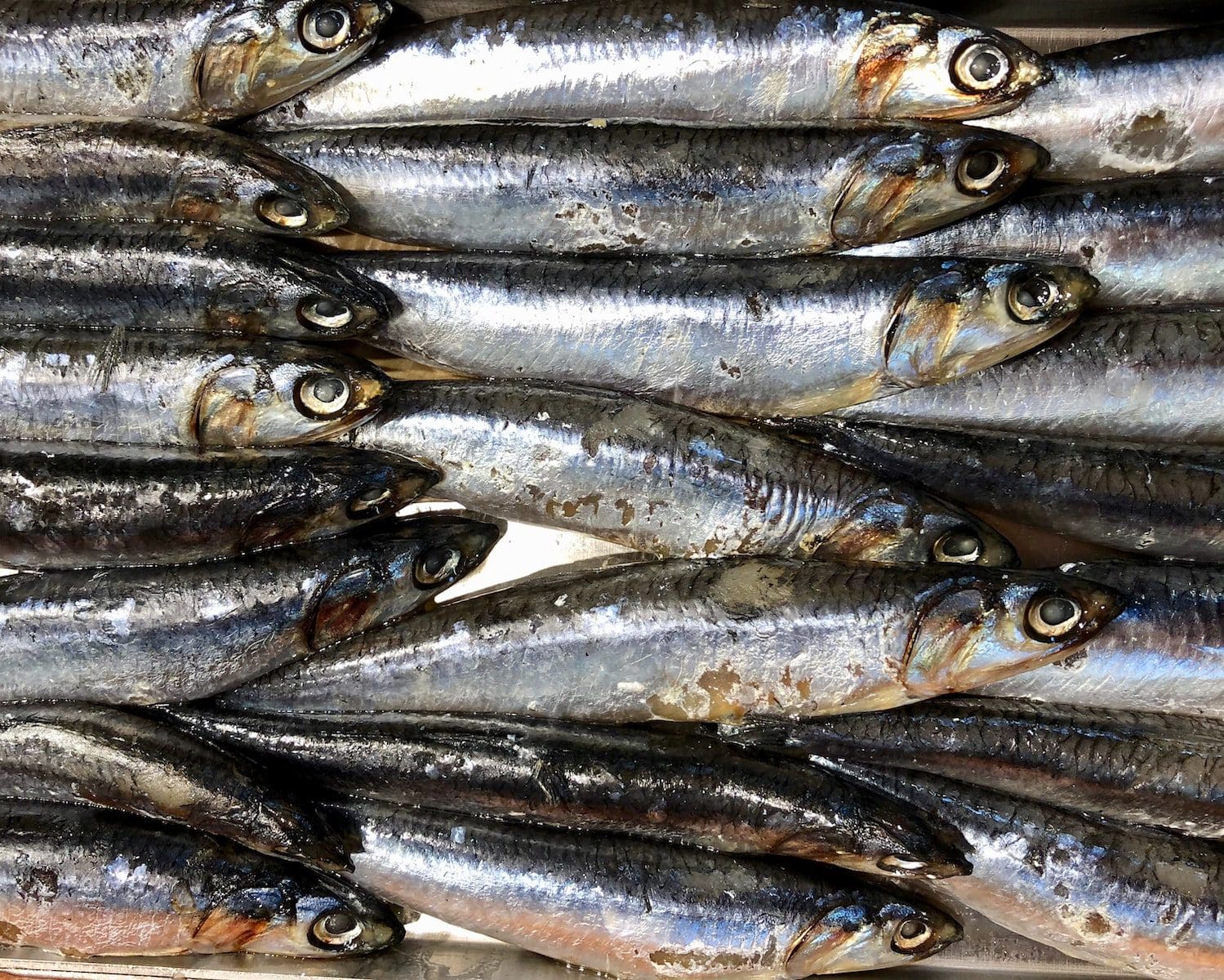Sardines and anchovies are tiny fishes with delicious tastes. Even though they are claimed to be related, they are very distinct in many respects, including physical features.
It can be tough to distinguish between the two, therefore, this article will explain the distinctions between anchovies and sardines, as well as which would be a good treat for your tummy.
Key Takeaways
- Anchovies are small fish with a strong, salty taste, while sardines are larger fish with a milder flavor.
- Anchovies are flavoured in dishes like Caesar salad and pizza, while sardines are eaten whole or in fillets.
- Anchovies are preserved in salt or oil, while sardines are canned in oil or water.
Anchovies vs Sardines
Anchovies are oily fishes used in cooking. They have a stronger, saltier flavour, used as a seasoning in dishes like Caesar salad or pizza. Sardines are oily fishes used in cooking, which are slightly larger and have a milder, sweeter flavour, eaten whole or used in sandwiches or salads.

In the Mediterranean, Indian, and Pacific Oceans, there are about 140 of these species evolved and categorized into more than 17 genera.
Anchovies move in flocks and are occasionally observed mixing with several other smaller fishes. It features a wide-gaped mouth, a snout, and a bluish-green body.
‘Sardine’ is a common term used for a range of fish, including sprat, mackerel, and pilchards. They are popular names for a variety of slender, greasy-fed fish belonging to the Clupeidae genus of herring.
Sardines may be found in both northern and southern seas, as well as estuarine and shoreline zones. Sardines, unlike anchovies, have a wide and pointed mouth and a projecting snout.
Comparison Table
| Parameters of Comparison | Anchovies | Sardines |
|---|---|---|
| Found In | They live in the Mediterranean, Indian, and Pacific Oceans, as well as the Black and Middle east Seas. | These fishes are caught off the coasts of southwestern North and South America, Japan, Australia, and South Africa in the Pacific and Indian seas. |
| Appearance | They’re slim and sleek, and they look a lot like trouts. Broad lips are used to classify them. Their upper jaws protrude above their eyes, and a pig-like snout protrudes further than lower jaw. | Sardines are slim, lustrous and silvery fishes with a single isolated dorsal side-fin, no lateral line of division on their body and absence of head scales is significantly visible. |
| Scientific Name | Engraulidae | Sardinella longiceps |
| Dimensions | Common Length ranges from 13.5 – 15 cms. | Comparatively longer than anchovies and ranges from 15 – 30 cms in length. |
| Dishes | 1.Tuna Caesar with anchovies & cavolo nero. 2. Courgette & anchovy salad. 3. Anchovy palmiers. | 1. BBQ sardines with chermoula sauce. 2. Sardine pasta with crunchy parsley crumbs. 3. Sardines with Sicilian fennel salad. |
What is Anchovies?
Anchovies are slender, greenish-blue fishes with azure flashes due to a chrome-like fine longitudinal stripe stretching from the posterior fin’s base.
The snout is narrow, and both jaws have small, sharp teeth. The rostral organ in the snout is a one-of-a-kind organ that is thought to be electrical sensing in nature, however, its essential role is unclear.
This little marine (some species are freshwater, too) forage fishes under the Engraulidae genus that are utilized for human consumption and as fish baits.
Some famous dishes across various cuisines that portray anchovies as a delicacy include tuna caesar with anchovies & cavolo nero, courgette & anchovy salad, anchovy palmiers, Spaghetti with smoked anchovies, chilli breadcrumbs & fried egg, etc.
Anchovies are enriched with omega-3 fatty acids and DHA, making them one of the most desirable seafood. Anchovies are migratory and are regarded as good value in the markets.

What is Sardines?
Sardines are little darting fishes that feed on phytoplankton and small crustaceans and may be found in open waters from South Asian territories to Chile and South American seas.
Sprat, salmon, and pilchards are just a few of the fish that go by this name. Sardines may be found in both north and central seas, as well as estuaries and coastal zones.
Traps or spillways, which are permanent enclosures made of poles into which swarms of sardines are steered as they migrate along the coastline, are among the many variations of encircling nets employed.
Sardines are mostly consumed by humans, although fish meals prepared from sardines are used as livestock feed, and sardine oil is used in the production of pigment, lacquer, parquet, and, in Europe, margarine.

Main Differences Between Anchovies and Sardines
- Anchovies are bluish-green and sleek fishes, whereas sardines are darker and lustrous with a more oily texture.
- Anchovies range from 13.5 – 15 cm in length with a broad mouth, whereas sardines range from 15 – 30 cm and have a protruding snout.

- https://www.thespruceeats.com/all-about-cooking-with-fresh-sardines-1300644
- https://www.thespruceeats.com/what-are-anchovies-1806993

The article presents an engaging insight into sardines and anchovies!
Nothing new or interesting to learn here. This is just common knowledge.
The details about anchovies and sardines are fascinating. I didn’t know there were so many different species.
Yes, the article offers detailed scientific findings that are intriguing.
This is a great comparison on sardines and anchovies. I appreciate the scientific information.
I agree, the article is comprehensive, and I learned a lot.
Very informative, I love how thorough the comparison is.
The scientific insights of this article are intriguing.
Very basic information provided here. Not a fan of the writing style.
I think this article makes learning about sardines and anchovies fun and enjoyable.
Absolutely, who knew learning about fish could be this engaging!
The scientific details are compelling and surprising, a great read.